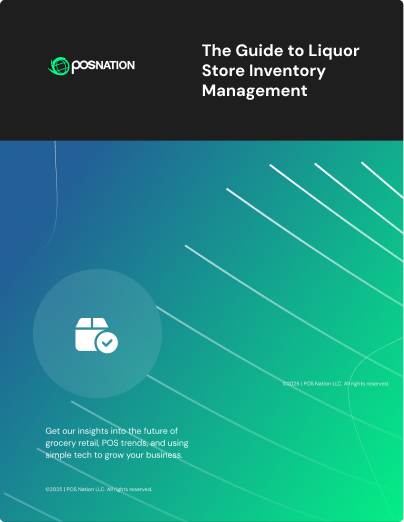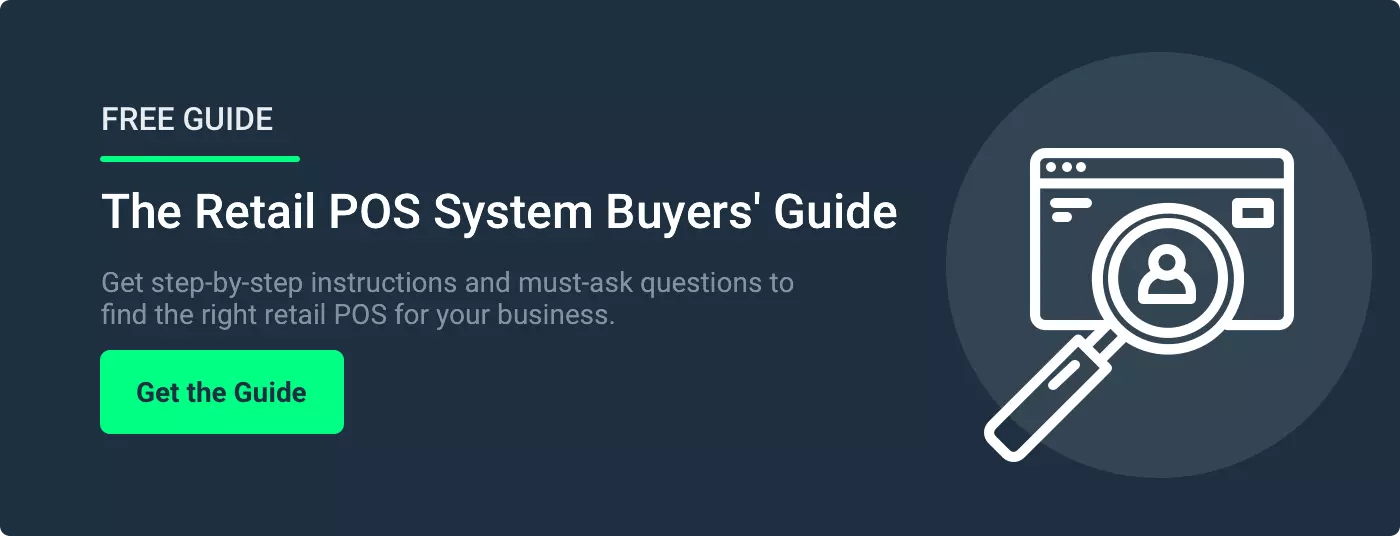For any type or size of merchant, the point of sale (POS) is by definition a mission-critical system.
Regardless of how your customers come into your store, they all end up at the same place, the point of sale.
Imagine giving your customers a warm welcome and an intuitive shopping experience yet when they check out they face long lines and a poor checkout experience?
Your customers will likely forget how much they enjoyed shopping with you and remember the clunky experience they had at checkout. So it’s crucial to invest in a POS system that delivers.
In addition to being a basic tool for retail and companies to conduct business, today’s point of sale systems can also be profitably tied in with key operational solutions, such as inventory management, labor scheduling, and customer marketing.
In this post, you’ll discover why a POS system is crucial to success, and seven tips on how to choose one for your small business.
Here’s How to Choose a POS System for Your Unique Business
Before we dive into how to choose a POS system, let’s look at why you need one in the first place.
A POS system does more than transactions. It's the beating heart of your store's operations, from inventory management and loss prevention to employee management, AR/AP tracking, and more.
Small businesses of all types and across industries use POS systems:
- Retail and consumer goods stores
- Liquor stores (within grocery stores and standalone wine & spirits stores)
- Tobacco stores and smoke shops
- Grocery stores and markets
- Convenience stores
- Lawn & garden centers
- Hardware stores
But different types of businesses have different POS system needs. POS systems’ importance makes selecting the one that’s right for your business a challenge.
Here are seven tips to help formulate the right questions to ask POS vendors as you narrow down your options.
7 Tips
- Answer These 5 Questions Before You Research Pos Systems
- Choose A Pos System That Makes Checkout A Breeze
- Consider Your Inventory Management Needs
- Decide What Additional Functions You Want Your POS To Provide
- Identify The Types Of POS Peripherals You Will Need
- Determine Which POS Security Features Your Store Needs
- Don't Forget About POS Reporting To Help Guide Your Business
1. Answer These 5 Questions Before You Research POS Systems
What features does your current POS system lack or do poorly?
This will help you prioritize your POS needs and ensure current pain points are addressed with your new POS system.
What type of POS hardware will you need?
From touchscreen monitors and cash drawers to receipt printers and pinpads, determining your POS hardware needs helps you know what to look for and get cost estimates from POS vendors.
What POS software, apps, and integrations will you need?
Your POS software is the brains of the operation. Be sure to identify specific functionality and app integrations needed.
What does your business growth plan look like?
This is an important one. You want a POS system that can scale with you as you grow. The last thing you need is to replace your POS system again because you've outgrown it.
What is your budget?
Every POS vendor you talk to will ask this question, so it's best to prepare for it. If you don't have a number in mind, you can use our Build & Price Tool to create your ideal POS system and see what it would cost.
2. Choose A POS System That Makes Checkout A Breeze
Is your checkout process simple and easy for customers, or do you find that long lines and slow checkout speeds are holding you back?
You need to maximize the checkout space for an optimal customer experience. POS systems with a minimal footprint keep things simple for your employees, and can even allow you to have multiple registers to service customers.
The pace of transactions is a key factor as well. Employees must be able to quickly scan products or use smart, intuitive product lookup or keyed entries to minimize wait time.
You can even use mobile devices connected to your POS system to augment your checkout capabilities.
3. Consider Your Inventory Management Needs
One of the biggest benefits of POS systems is their ability to automatically deduct sold items from inventory, making key measurements such as inventory on hand and item-by-item sales data far more accurate.
However, if your business operates with a limited, relatively uncomplicated inventory – e.g. just a few hundred SKUs with little variation in size, style, or color – choosing a POS system with advanced inventory management capabilities will be a wasted investment.
Key questions to ask include:
- How many items do you carry in each store?
- Do you look at each item as a unique item or as a style?
- How do you order inventory from suppliers if the item has varying colors/sizes? Do you need to see item attributes as a matrix?
- Do other buyers/store personnel need to be able to fill in or look up on-hand information without visiting the store floor or calling other stores?
- What merchandise information do you want to be able to view at your desktop?
4. Decide What Additional Functions You Want Your POS To Provide
Even if your needs are currently fairly basic, that doesn’t mean they won’t expand as you grow. Consider additional capabilities you may want your system to provide in the future, such as:
- Time and attendance/time clock
- Sales reporting, broken down by associate, store, department, time of day, etc.
- Customer marketing, allowing you to capture the customer’s purchase history and other data for future marketing, and customer loyalty programs.
- Transfer systems, allowing associates to transfer merchandise between stores, and on-hand lookup, allowing each store to see at a glance what inventory other stores have on hand.
- Gift cards, tracking gift cards sold, and their redemption.
Related: 9 Must-Have Features for Your Next Small Business Retail POS System
5. Identify The Types Of POS Peripherals You Will Need
POS system hardware isn’t limited to the cashier’s touchscreen. Think about whether dual display screens, showing customers what they ordered to improve accuracy, or displaying ads to promote key items, are worth the investment.
Compare thermal printers to ribbon printers: thermal printers use heat to print receipts so even though they cost more initially, retailers can save long-term on the ink cartridges required by ribbon printers.
6. Determine Which POS Security Features Your Store Needs
Security must be a key element of any POS system, from the basics (lockable cash drawers, cash drops, and password-protected access) to erecting firewalls around the POS system’s network to guard against malware attacks.
Retailers accepting payment cards must ensure their POS systems comply with the latest Payment Card Industry Data Security Standards (PCI DSS).
Retailers doing a high volume of payment card business may want to consider using encryption, which protects customer data during transactions by creating a cryptographic key that denies access to anyone without the appropriate decrypting key.
7. Don't Forget About POS Reporting To Help Guide Your Business
We get it: reporting is not a "sexy" feature. But it is critically important. Sales reports, inventory and catalog reports, and customer history tracking are just a few of the key data points available in most POS systems to help you make smart business decisions.
When it comes to choosing a POS system, reporting cannot be overlooked.
Ready to Choose a POS System for Your Business?
Finding a POS system that meets your business’ current needs while also providing the tools for future growth can be challenging. Keep both short-term and long-term requirements in mind when evaluating different solutions.
You can find more must-ask questions and considerations to choose the right POS system in our Retail POS System Buyers' Guide. For example:
- Local database vs. cloud: what type of software is right for your business?
- What information do you need to choose a credit card processor?
- The questions you need to ask to get past a POS system sales pitch
Download the guide today to get the information you need to choose the right POS system for your business.






 by Graham Hoffman
by Graham Hoffman

 by Brian Sullivan
by Brian Sullivan

 by Cort Ouzts
by Cort Ouzts

 by Spence Hoffman
by Spence Hoffman